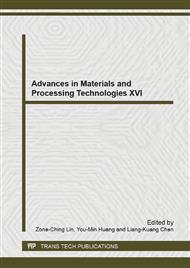p.592
p.600
p.609
p.615
p.623
p.630
p.635
p.647
p.655
Hybrid Genetic Algorithm for Solving Assembly Line Balancing Problem in Footwear Industry
Abstract:
This research develops a heuristic algorithm for assembly line balancing problem (ALBP) of stitching lines in footwear industry. The proposed algorithm can help to design the stitching line with workstations, machines and operators for the production of every new product model. Rank-positional-weighted heuristics and hybrid genetic algorithms are proposed to solve ALBP. First, the heuristics assign tasks and machines to workstations. This solution is then used as an initiative population for hybrid genetic algorithm for further improvement. Real data from footwear manufacturers and experimental designs are used to verify the performance of the proposed algorithm, comparing with one existing bidirectional heuristic. Results indicate that when the size and shape of shoes increase, the proposed genetic algorithm achieves better solution quality than existing heuristics.Production managers can use the research results to quickly design stitching lines for short production cycle time and high labor utilization.
Info:
Periodical:
Pages:
623-629
Citation:
Online since:
May 2014
Price:
Сopyright:
© 2014 Trans Tech Publications Ltd. All Rights Reserved
Share:
Citation:


